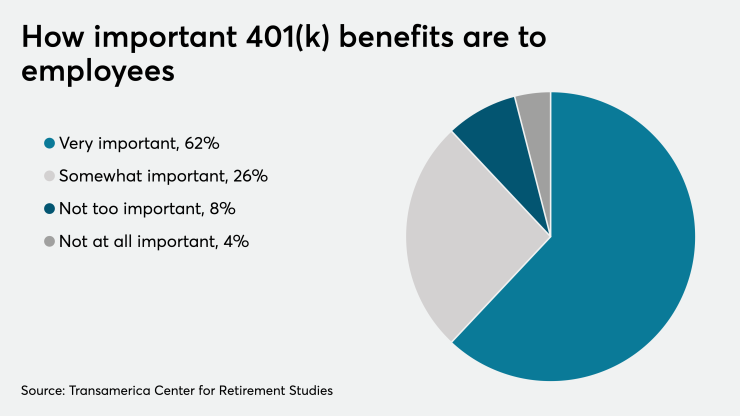At CSAA Insurance Group, we’ve had a 401(k) plan that matches up to 6% of an employees’ pre-tax income for many years. It’s a terrific benefit, but we were concerned that many of our people were not taking advantage of this benefit to save for their retirement.
When we spoke with enough of them, a common theme emerged: their current financial burden was so high that they felt they couldn’t afford to spare any dollars for some far-off future.
What would make workers with good jobs and steady income feel like they can’t afford to save even as little as 6% of their wages? The short answer is debt. About 21% of employees defined financial wellness as being debt-free, according to a PWC report on financial wellness. This number was even higher among millennials. PWC also found that excessive debt caused stress even among employees making more than $100,000 a year.
We believed that helping our workers tackle their debt had to be part of the solution. For us, part of the answer was tying together student loan assistance with our 401(k) plan. To be eligible for student loan assistance, our employees contribute at least 2% of their pre-tax income to the 401(k). They can then choose to have the remaining 4% of the 6% match funds go to pay down the principal of their student loans.
Financial stress impacts employee engagement, which can have a negative effect on those around them and the bottom-line business impact can be profound. Gallup estimates that worker disengagement costs U.S. companies up to $600 billion a year in lost productivity.
While confident in our plan design, we were not without a few concerns: would people contribute less to their 401(k) plans? Would overall participation go down?
After launching the new plan at the beginning of this year, we have had terrific results. Approximately 230 employees have signed up for the program since it launched. About 65% of those who signed up are millennials. Nearly 60% of those participating are either contributing to their 401(k) for the first time or were not taking full advantage of the 6% matching contribution.
This last statistic is the most telling. Instead of shrinking the number of workers enrolled in the 401(k) program, it increased. We learned there doesn’t have to be a trade-off. We can incentivize good long-term financial wellness habits (saving) by helping to reduce current financial stress (debt reduction).
The strong adoption provides proof that student loan debt burdens are a big part of the financial stress experienced by today’s workers, especially among millennials. Helping employees with their current financial stress enables them to start building for their financial future.
The early results of our new combination student loan assistance and retirement savings plan are exciting. I encourage other senior executives and benefits leaders to embrace this approach. Two factors were invaluable in our success. The first is creating a safe space to get employees to speak honestly about their personal finances. Financial stress and indebtedness are not things people like to discuss and it’s important that workers do not feel like they will be judged. This is especially true in regard to student loans, where generations have been led to take on five and six figure debt burdens at a very young age with little understanding of the consequences.
The second factor is having a good partner in plan design and implementation. Tuition.io is one of the leading providers of student loan assistance programs, and they worked with us to execute this unique plan design and have helped us every step of the way to ensure employee understanding and support.






